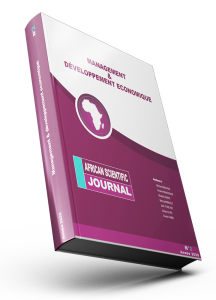Relation entre investissements prives et investissements publics dans l'UEMOA : effet d'éviction ou complémentarité
DOI :
https://doi.org/10.5281/zenodo.14936258Mots-clés :
investissements, publics, privés, éviction, complémentarité, UEMOARésumé
Résumé
Dans la théorie, l’investissement public peut avoir des liens à deux sens avec l’investissement privé. D’une part, par le biais de la concurrence dans l’accès au financement, l’investissement public peut créer un effet d’éviction sur l’investissement privé. D’autre part, l’investissement public peut avoir un effet d’entraînement sur l’investissement privé, avec une amélioration conjoncturelle et une anticipation de la demande agrégée à court terme.
L’objectif de cette présente étude est d’identifier le scénario qui existe sur le lien entre les investissements privés et les investissements publics dans l’UEMOA : un effet d’éviction ou une complémentarité. A cet égard, les méthodes utilisées sont le test de Causalité de Granger et l’analyse autorégressive (fonctions de réponses impulsionnelles). Le test de Granger permettra de déterminer l’influence causale des investissements publics sur les investissements privés et inversement. Nous utilisons le modèle var structurel, pour sortir des réponses impulsionnelles suite à des chocs, afin de bien capter l’effet d’entrainement ou l’effet d’éviction.
Les résultats montrent une hétérogénéité sur la nature de relation entre les investissements publics et les investissements privés dans l’UEMOA. Le Bénin fait exception avec un effet de complémentarité entre les investissements publics et les investissements privés. Un effet d’évection se dégage presque au Sénégal et au Togo. Malgré l’espace commun partagé, les résultats se diffèrent d’un pays à un autre, en raison de la structure des économies et de la capacité de résilience non identique.
Mots clés : investissements, publics, privés, éviction, complémentarité, UEMOA
Abstract
In theory, public investment can have two-way links with private investment. On the one hand, through competitive access to finance, public investment can have a crowding-out effect on private investment. On the other hand, public investment can have a knock-on effect on private investment, with an economic improvement and a short-term anticipation of aggregate demand.
The objective of this study is to identify the scenario that exists regarding the link between private and public investment in the WAEMU: a crowding-out effect or complementarity. In this regard, the Granger Causality Test and autoregressive analysis (impulse response functions) are used. The Granger Causality Test is used to determine the causal influence of public investment on private investment and vice versa. We use the Structural Var Model to extract impulse responses to shocks, in order to properly capture the knock-on effect or the crowding-out effect.
The results show heterogeneity in the nature of the relationship between public investments and private investment in the WAEMU. Benin is the exception, with a complementarity effect between public and private investment. A crowding-out effect is almost apparent in Senegal and Togo. Despite the shared common space, the results differ from one country to another, due to the structure of the economies and the non-identical resilience capacity.
Téléchargements
Publiée
Comment citer
Numéro
Rubrique
Licence
(c) Tous droits réservés African Scientific Journal 2025

Ce travail est disponible sous licence Creative Commons Attribution - Pas d'Utilisation Commerciale - Pas de Modification 4.0 International.





















